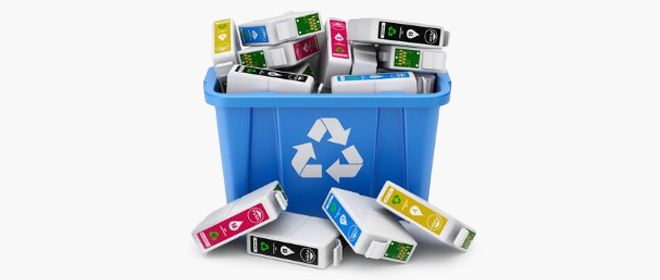Ink cartridges play a crucial role in the world of printing, and understanding their ink capacity is essential for efficient and cost-effective printing. Efficient printing not only ensures that documents and images are produced accurately and with high quality, but it also helps save resources and money. To achieve this, users need to be aware of different cartridge types and their ink capacities, enabling them to make informed decisions about the cartridges that best suit their printing needs. We buy and sell unused ink cartridge if you have and want to sell then visit us.
Different Cartridge Types:
There are three primary types of ink cartridges available in the market:
OEM (Original Equipment Manufacturer) Cartridges: These are cartridges manufactured by the printer’s original brand, specifically designed to work with their respective printer models. OEM cartridges are known for their reliability and high-quality output.
Compatible Cartridges: These are third-party cartridges made by companies other than the printer’s original brand. They are designed to be compatible with specific printer models and often offer a more affordable alternative to OEM cartridges.
Remanufactured Cartridges: Remanufactured cartridges are recycled OEM cartridges that have been refilled and refurbished. While they are an eco-friendly option, the quality and consistency may vary based on the remanufacturing process.
Standard Ink Cartridges
Standard ink cartridges are the most common type of cartridges that come with new printers. They usually contain a standard ink capacity set by the printer manufacturer. The ink volume in these cartridges is determined through rigorous testing and calibration by the manufacturer to ensure consistent printing performance.
For popular printer brands/models, standard ink cartridge capacities can range from 5 milliliters to 20 milliliters of ink per color. The exact capacity may vary depending on the printer model and intended usage.
High-Yield (XL) Ink Cartridges
High-yield or XL ink cartridges are designed to hold more ink than standard cartridges. They are particularly beneficial for users with high printing demands as they offer extended print life, reducing the frequency of cartridge replacements. High-yield cartridges can contain two to three times more ink than standard cartridges.
While high-yield cartridges often have a higher upfront cost, they generally prove to be more cost-effective in the long run due to their extended print life.
Economy or Low-Capacity Ink Cartridges
Economy or low-capacity ink cartridges are designed for users with relatively low printing needs. These cartridges contain less ink compared to standard or high-yield cartridges, making them more affordable upfront. They are suitable for occasional printing and light usage scenarios.
However, using economy cartridges extensively might result in higher overall costs due to their lower ink capacity and the need for more frequent replacements.
Factors Affecting Ink Consumption
Several factors influence ink usage in printing. The print quality settings, such as draft, normal, or high-quality mode, directly impact ink consumption. Printing high-resolution images or graphics can also consume more ink. Additionally, the type of paper used, with more absorbent papers using more ink, and the content of the documents can affect ink usage.
To optimize ink consumption and extend cartridge life, users can choose lower quality settings when high-quality output is not necessary, use appropriate paper types, and reduce the number of unnecessary color prints.
Monitoring Ink Levels
Printers employ various methods to monitor and display ink levels accurately. Some printers have software that communicates with the cartridges and displays ink levels on the computer screen. Others may have built-in LED indicators on the printer itself. Regularly checking ink levels ensures that users are aware of when to replace or refill cartridges.
However, it is essential to interpret ink level warnings accurately as they may not always be entirely precise. Some printers may display warnings earlier than necessary, while others might not provide timely notifications.
Refilling and Resetting Ink Cartridges
Refilling ink cartridges can be a cost-saving option, particularly for users who do a lot of printing. However, it’s crucial to follow proper handling procedures during the refilling process to avoid ink spills or damage to the cartridges.
Additionally, many modern cartridges come with chips that track ink levels and may need to be reset after refilling. This ensures that the printer accurately detects the new ink levels.
Using Third-Party Cartridges
Third-party ink cartridges can offer an alternative to OEM cartridges at a lower cost. However, their compatibility with specific printer models can be uncertain, and some printers may reject or experience issues with non-OEM cartridges.
While some users have positive experiences with third-party cartridges, others may encounter problems like print quality inconsistencies or possible damage to the printer.
The Components of Cartridge Ink
Printer cartridge ink comprises several primary ingredients, each serving a specific purpose. One of the key components is water, which acts as a solvent, enabling the other ingredients to dissolve and mix effectively. The article will further discuss the role of water in ink composition.
Another essential aspect of ink formulation is the use of pigments or dyes for color reproduction. Pigments are solid particles that provide vibrant and long-lasting colors, while dyes are liquid substances that offer a wider color gamut. The article will explore the differences between pigments and dyes and their impact on print quality.
Types of Ink: Dye-based vs. Pigment-based
Dye-based and pigment-based inks are the two most common types used in printers. This section will explain the distinctions between them. Dye-based inks are known for their intense color vibrancy, making them ideal for producing vivid photographs and graphics. However, they may fade over time and are more susceptible to water damage. On the other hand, pigment-based inks provide excellent longevity and water resistance but might not match the vibrancy of dye-based inks. This section will provide a detailed comparison of their characteristics, helping users choose the appropriate ink for their specific printing needs.
Additional Ink Components
In addition to water, pigments, and dyes, printer cartridge ink often contains secondary ingredients such as stabilizers and surfactants. Stabilizers help maintain the ink’s consistency and prevent the pigments from settling, while surfactants aid in ink flow and reduce surface tension. The article will explain the role of these components in preserving ink quality and ensuring smooth printer performance. Furthermore, any other additives that improve ink performance, such as drying agents or anti-clogging agents, will also be mentioned.
Ink Manufacturing Process
The ink manufacturing process is a crucial aspect that influences ink quality and consistency. This section will provide an overview of how the ingredients are blended and processed to create ink. It will cover the steps involved in ink production and highlight the importance of stringent quality control measures to ensure consistent and reliable ink performance.
Environmental Considerations
Printer users should be aware of the environmental impact of ink components. This section will address eco-friendly ink alternatives and initiatives aimed at reducing the ecological footprint of printing. It will explore the use of eco-friendly ink options made from renewable resources or recycled materials. Additionally, recycling and disposal options for used ink cartridges will be mentioned, encouraging responsible ink cartridge disposal to minimize environmental harm.
Conclusion:
Understanding ink cartridge capacities is vital for efficient printing and cost-effective use of resources. Standard, high-yield, and economy cartridges cater to different printing needs, and users should choose accordingly. Monitoring ink levels accurately and optimizing ink consumption can lead to longer cartridge life and better overall printing performance. Whether users opt for OEM or third-party cartridges, making informed decisions about ink cartridges will ensure smooth and satisfactory printing experiences.





